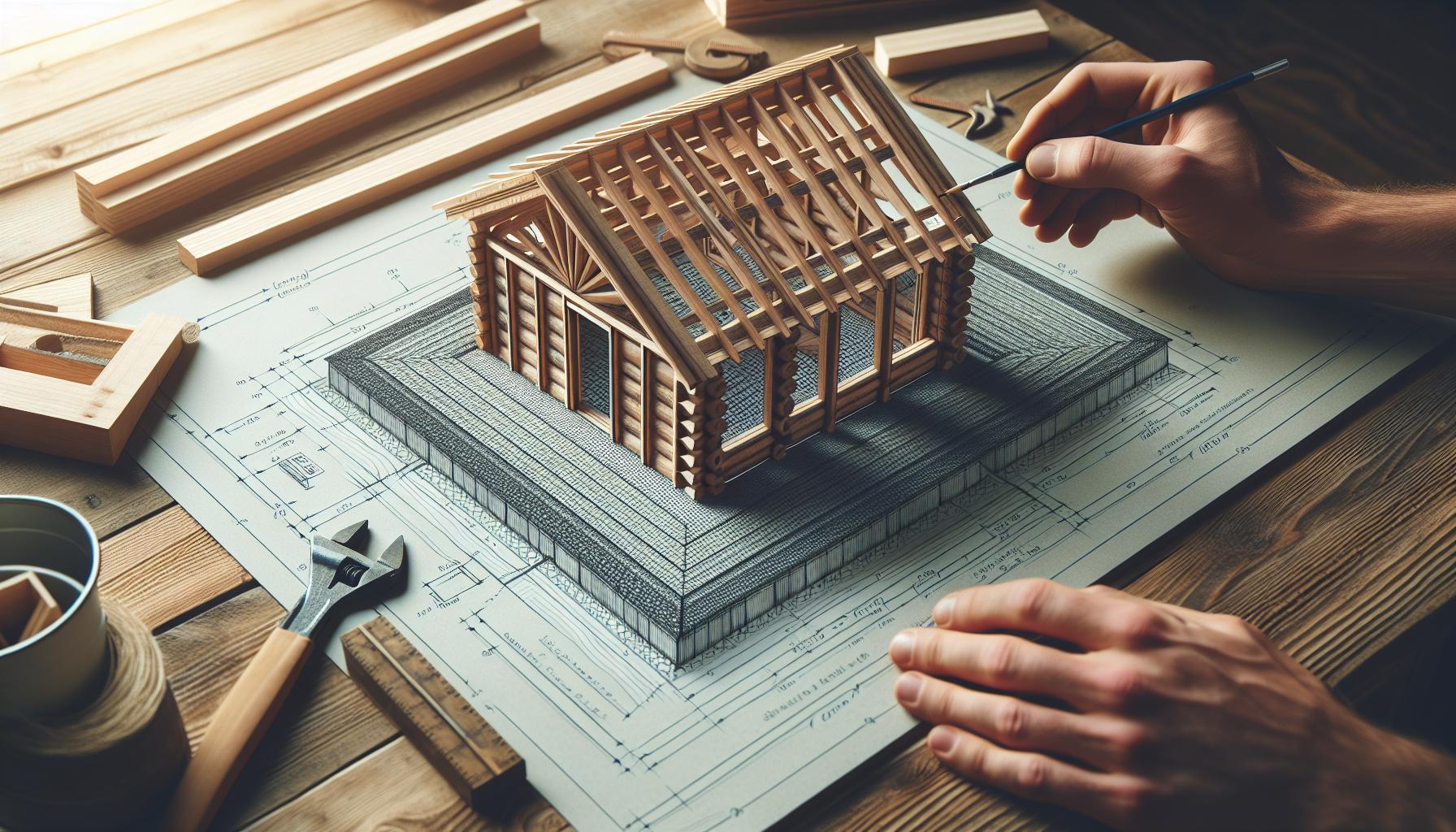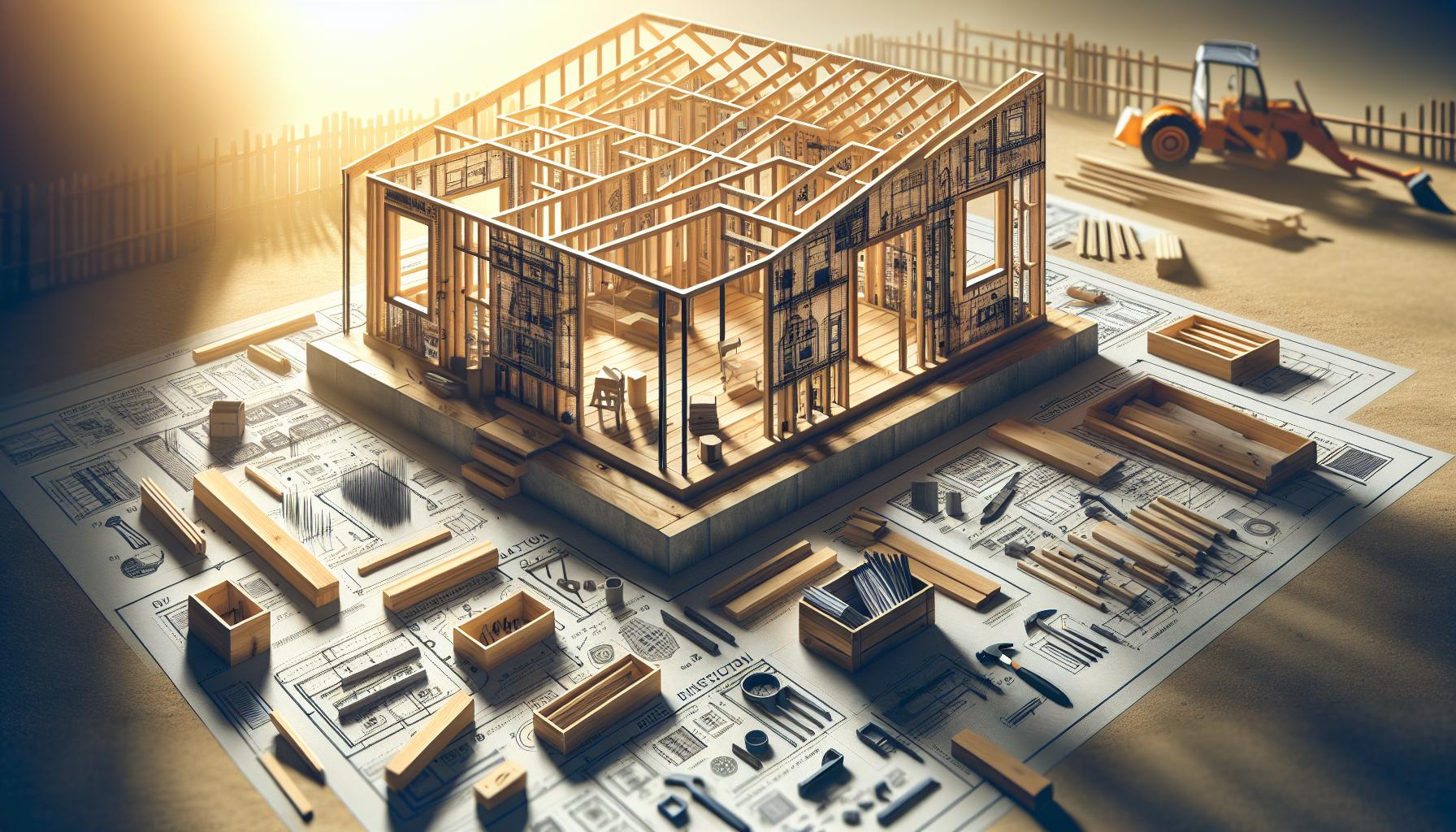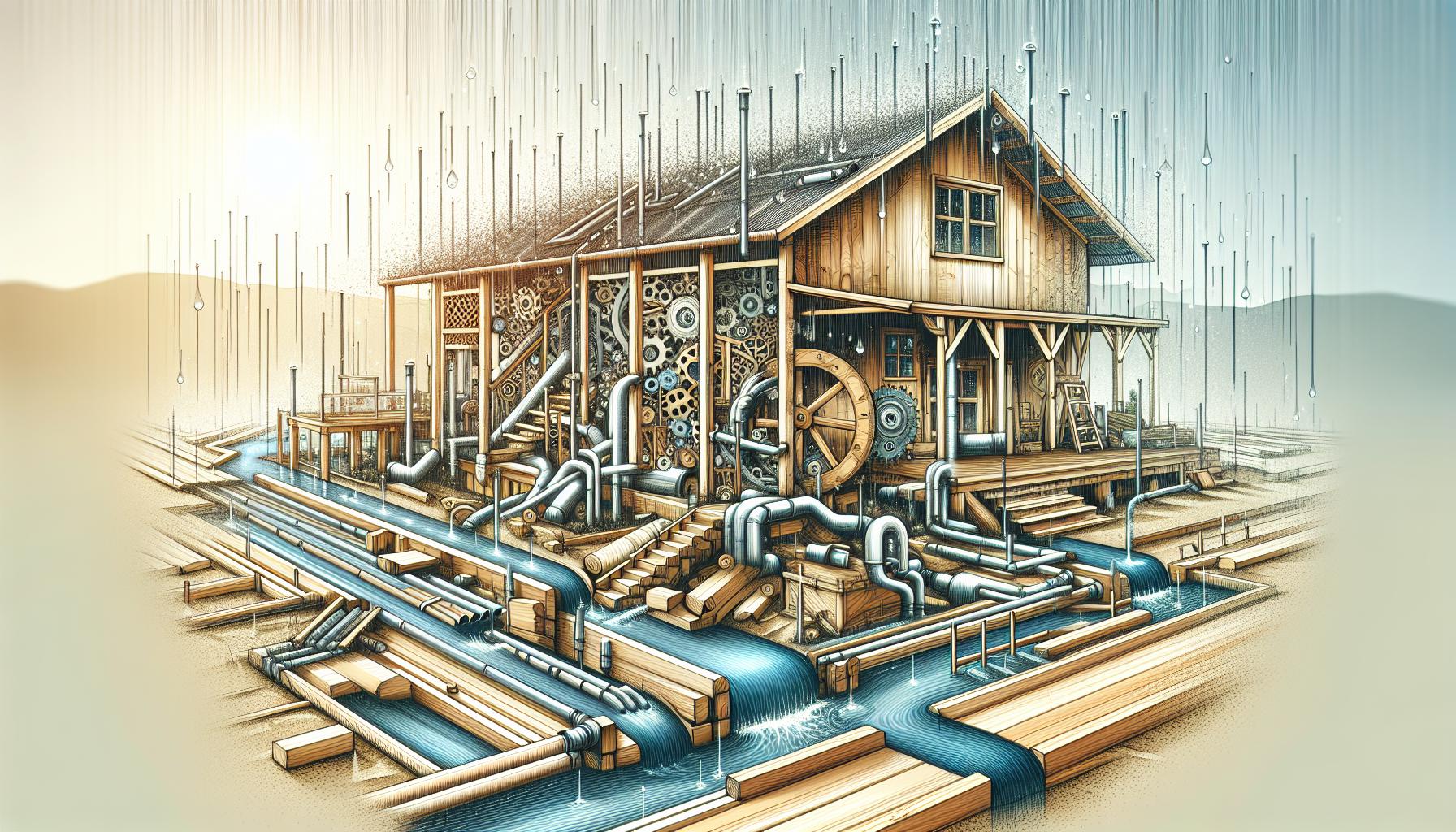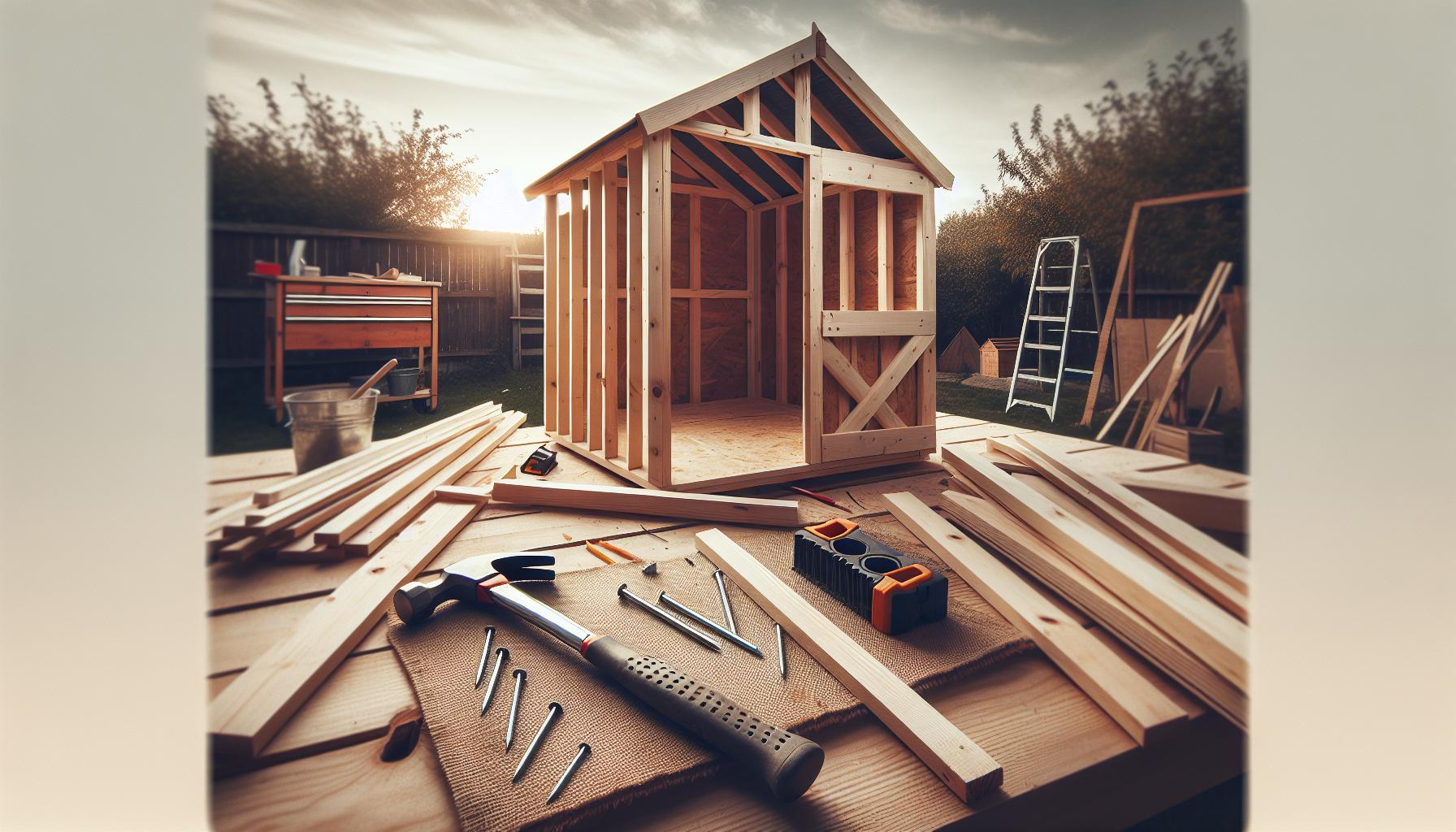A solid foundation is crucial for the longevity of your shed,yet many overlook this vital step. Choosing the right type of support can prevent structural issues and costly repairs down the line. This guide will walk you through essential methods to establish a sturdy base, ensuring your shed stands the test of time.
Understanding the Importance of a Solid Shed Foundation
A sturdy base is the cornerstone of any successful shed construction project, significantly impacting its durability and functionality. Many may underestimate the role of a solid foundation,but it’s vital for preventing common problems such as door misalignment,rotting floors,and damage from soil movement. Without proper support, a shed can suffer from issues that not only diminish its lifespan but also require costly repairs down the road.
When embarking on the journey of building your shed, understanding the various foundation options is crucial. Common choices include concrete slabs,gravel pads,and wooden flooring on piers. Each option has its pros and cons, influenced by factors such as your budget, local climate, and site conditions. For instance, a concrete slab provides a robust, level surface that resists moisture, whereas gravel foundations offer excellent drainage while being more cost-effective.
Key Reasons for a Solid Shed Foundation
- Moisture Protection: A well-built foundation keeps the shed elevated, preventing moisture from penetrating the materials and causing decay.
- Structural Integrity: Correctly supporting your shed helps maintain its shape and ensures doors and windows function smoothly.
- Longevity: Investing in a durable foundation minimizes the risk of settling and shifting, contributing to the shed’s overall longevity.
- Enhanced Aesthetics: A level foundation presents your shed in the best possible light,enhancing its appearance and your property’s value.
Choosing the right foundation is a crucial step in how to build a shed foundation. Ensuring your shed has a solid base not only protects your investment but also enhances its usability and attractiveness. consider your options carefully and take the time to prepare a foundation that will deliver lasting success for your shed project.
Types of Shed Foundations: Which One is Right for You?
When it comes to constructing a shed that stands the test of time, the foundation you choose plays a crucial role. an effective foundation not only supports the weight of the shed but also helps in minimizing moisture issues and improving stability.With multiple options available, it’s vital to select the right one based on your specific needs, soil conditions, and budget. Let’s explore the various types of shed foundations to determine which suits your project best.
Concrete Slab Foundation
The concrete slab foundation is one of the most popular choices for shed construction. It involves pouring a concrete pad that provides a solid and long-lasting base for your structure. Here are some key advantages:
- Durability: Concrete slabs are highly durable and can withstand various whether conditions.
- Moisture Resistance: This type of foundation protects against moisture-related issues, making it ideal for damp environments.
- Level Surface: The slab provides a perfectly level surface, essential for stability.
However, it requires proper planning and permits, depending on your location, and can be time-consuming to install.
Wooden Beams and Skids
For those looking for a less permanent solution or a more rustic aesthetic, wooden beams and skids offer a viable option. This method involves laying wooden beams across the ground or resting them on concrete blocks. Consider these factors:
- cost-Effective: Generally,this is a more affordable option compared to pouring a concrete slab.
- Versatility: Easier to relocate if needed, making it ideal for temporary sheds.
- Simpler Installation: The setup process is relatively straightforward, requiring minimal tools.
Although this foundation is effective in dry conditions, it may not provide adequate support in areas with heavy rainfall or flooding.
Piers and Post Foundation
A pier and post foundation is another strong contender that offers dimensional stability. It involves setting vertical posts in concrete footings at specific intervals, creating a raised platform for the shed. Here’s why you might opt for this method:
- Elevation: This foundation elevates the shed, protecting it from ground moisture.
- Load-Bearing: The posts can distribute loads effectively, making the shed stable and secure.
- Simple Repairs: If a post fails, it’s easier to replace compared to a full slab.
This type of foundation is notably useful in uneven terrains or areas with heavy rainfall.
Foundation Comparison Table
| Foundation Type | Cost | Durability | Moisture Resistance | Installation Difficulty |
|---|---|---|---|---|
| Concrete Slab | Moderate-High | Vrey High | Excellent | High |
| Wooden beams/Skids | Low-Medium | Moderate | Fair | Low |
| Piers and post | Moderate | High | Good | Moderate |
Understanding the various types of shed foundations allows you to make an informed decision. Whether you prioritize cost, ease of installation, or durability, there’s a foundation solution that aligns with your vision, paving the way toward successful shed construction.
Essential Tools and Materials for Building Your Foundation
When embarking on the journey of constructing a strong shed foundation, having the right tools and materials is crucial to ensure the process is smooth and successful. The right equipment not only enhances the efficiency of your workload but also guarantees that the foundation you build will stand the test of time. Whether you’re a seasoned builder or a DIY novice, understanding what you need before diving into your project can save you time, effort, and money.
Essential Tools
To effectively lay a shed foundation,you’ll require a variety of tools. Here’s a list of the must-haves:
- Measuring Tape: Accurate measurements are key; a long tape ensures you can measure larger areas.
- Level: To ensure your foundation is perfectly flat and stable.
- Shovel: For digging out soil and preparing the building site.
- Pickaxe: helpful in breaking up hard soil or gravel.
- Compact Tool: Either manual or mechanical tools for compacting soil and gravel.
- Saw: A hand saw or power saw for cutting lumber if using wooden materials.
- Hammer: Necessary for nailing components together.
- Power Drill: For driving screws into various materials quickly.
Materials Needed
Selecting high-quality materials is just as important as the tools you use. the choice of materials will greatly impact the stability and durability of your foundation. Here are the core materials to acquire:
| Material | Description |
|---|---|
| Gravel or Crush Stone | An excellent base that provides drainage and reduces shifting. |
| Pressure-Treated Lumber | Essential if your building a wooden foundation to resist moisture. |
| Concrete Blocks or Slabs | Ideal for a durable, stable foundation that can bear the weight of your shed. |
| Fabric Landscaping Material | Helps to prevent weed growth while allowing proper drainage. |
| Rebar or Steel Stakes | For added reinforcement, especially important in areas with frost or shifting ground. |
With the right blend of tools and materials, you’re well on your way towards building a robust foundation essential for your shed’s longevity. Each step in your planning and construction will benefit from these preparatory essentials, paving the way for success in your shed-building journey. Assessing your project requirements and gathering these items will provide you with a solid start, ensuring that your shed will not only serve its purpose but also endure through the years.
Step-by-Step Guide to Preparing Your Site for Foundation Work
When it comes to constructing a durable shed foundation, the groundwork you lay—both literally and figuratively—can make all the difference. Setting up your site correctly is essential for ensuring stability and longevity in your shed’s structure. Follow this step-by-step guide to prepare your site for foundation work effectively,ensuring a solid start to your shed building project.
Assess the Location
Begin by selecting the perfect location for your shed. Look for a spot that is flat, well-drained, and away from large trees that could damage the structure with falling branches. Consider the sunlight and wind exposure, as these factors can influence the foundation’s moisture levels.
Things to Consider:
- Accessibility for construction and materials delivery
- Proximity to utility lines
- Local zoning regulations
Clear the Site
After choosing your location,the next step is to clear the area of any debris,rocks,and vegetation. This will give you a clean slate for foundation work, minimizing complications:
- Use tools like shovels, rakes, and wheelbarrows to remove existing vegetation and rocks.
- If necessary, use a sod cutter for grass or large trowels for stubborn roots.
Level the Ground
Ensuring that your site is level is crucial for a stable foundation. After clearing the area, check the levelness with a long straight board and a level:
- Place the board across the site and use your level to identify high and low spots.
- Fill in low spots with soil and compact it, while removing excess soil from high areas.
Mark the Foundation Outline
Once the ground is level, mark the foundation size using stakes and string. This will serve as your guide throughout the building process:
- Measure and mark the corners of the shed foundation using a measuring tape.
- Use a chalk line or string to connect the stakes for a clear outline.
| Foundation Size | Footprint Area (sq. ft.) | Required Materials |
|---|---|---|
| 8’ x 10’ | 80 | 8 concrete blocks, gravel |
| 10’ x 12’ | 120 | 12 concrete blocks, gravel |
Preparing your site for foundation work is a pivotal step in the journey of building a shed. A well-prepared site ensures that your foundation is secure, ultimately safeguarding your investment and prolonging your shed’s life. by carefully assessing the location, clearing and leveling the ground, and marking the foundation outline, you set the stage for success in constructing a sturdy shed foundation.
Laying the Groundwork: Techniques for Building a Level Base
establishing a sturdy and level base is the cornerstone of constructing a shed that endures the test of time. A well-prepared foundation not only enhances the durability of your structure but also helps to prevent water damage and pest infestations. The initial steps you take in laying this foundation can make all the difference in achieving success in your shed-building project. Here, we will discuss effective techniques for creating a level base that can support your shed’s weight and withstand natural elements.
choosing the Right Location
Before you even begin to work on leveling your base, selecting the ideal location is crucial. Consider these factors when choosing the perfect spot for your shed:
- Drainage: Ensure your site has good water drainage to prevent flooding or pooling around your shed.
- Sunlight: Choose a location that receives adequate sunlight to prevent mold growth, particularly in damp climates.
- Accessibility: Consider ease of access for maintenance and storage.
Measuring and Marking Your Foundation Area
once you’ve chosen a suitable location, it’s time to measure and mark out the area where the shed will sit. This planning is essential for laying a level base:
- Use string Lines: Stretch strings between stakes driven into the ground at your shed’s corners. This will outline your foundation area and help maintain a square shape.
- Check Square Corners: Make sure the corners form right angles using the 3-4-5 triangle method (3 feet from one corner, 4 feet from the adjacent corner, and checking for a 5-foot diagonal).
- Rough Leveling: Use a shovel to remove any high spots and fill in lower areas within the marked boundary.
Techniques for Achieving a Level Base
There are different techniques to create a level base, depending on the materials you choose. Here are some common methods:
| Method | Description | Ideal Materials |
|---|---|---|
| Gravel Pad | A layer of gravel that provides excellent drainage and stability. | Crushed stone or clean gravel |
| concrete Slab | A solid, durable base that can handle heavy loads if done correctly. | Concrete mix, wooden forms |
| Wooden Skids | Using treated lumber as a skid foundation elevates the shed, reducing moisture contact. | Treated lumber |
Using a spirit level or a laser level, verify that your base is even before proceeding with the installation of beams or flooring. If you’re using gravel or concrete,compact the material carefully to ensure a stable surface. If you opt for wooden skids, lay them spaced evenly according to your shed’s design to allow weight distribution.
By following these foundational techniques,you set yourself up for long-term success in building your shed,as a solid base is key to maintaining the integrity and functionality of the entire structure. Whether you choose to opt for a gravel pad, concrete slab, or wooden skids, the effort put into laying a level base will pay off with a sturdy and durable shed that effectively meets your storage needs.
How to Ensure Proper drainage for Longevity and stability
A well-constructed shed foundation is crucial for the longevity and stability of your outdoor structure, yet it’s often an overlooked aspect of construction. Inadequate drainage can lead to moisture build-up, resulting in rot, mold, and structural damage over time. to safeguard your investment, understanding how to ensure proper drainage is essential in the early stages of building, setting you on the path to lasting success.
Understanding Drainage Needs
Before you even begin laying the foundation, assessing the drainage characteristics of your building site is vital. Here are some factors to consider:
- Soil Type: Sandy soil drains better than clay soil,which can hold moisture. conduct a simple soil test to determine the drainage capacity of your site.
- Natural Slope: Observe the land for its natural incline. Aim to position your shed on a slight slope to ensure proper water runoff.
- Water Sources: Identify any nearby water sources such as ponds or irrigation systems, and plan your foundation accordingly to avoid water pooling around your shed.
Implementing Effective Drainage Solutions
To optimize drainage around your shed, consider the following strategies that can enhance its foundation’s stability:
- Grading: Ensure that soil is graded away from the shed foundation to facilitate adequate drainage. A slope of at least 6 inches over 10 feet is typically recommended.
- Drainage Ditches: Create shallow ditches that direct water away from the foundation.This can be especially useful in areas prone to heavy rainfall.
- French Drains: Installing a French drain system can effectively manage excess water buildup by channeling water away from the foundation. This involves digging a trench,laying a perforated pipe,and covering it with gravel.
Choosing the Right Foundation Type
The type of foundation you choose can significantly affect drainage. Here’s a simple comparison of common types:
| Foundation Type | Drainage Properties | Longevity Prospects |
|---|---|---|
| Concrete Slab | Good; needs proper grading | High; resistant to pests |
| Skids | Moderate; allows airflow | Moderate; may rot over time |
| Post and Beam | Excellent; elevated for airflow | Very High; minimizes moisture contact |
an investment in proper drainage not only enhances the lifespan of your shed but also ensures that you won’t face costly repairs down the line. By conducting thorough site assessments, implementing effective drainage solutions, and selecting the right type of foundation, you can enjoy your shed for years to come without the worry of water-related damage.
Common Mistakes to Avoid When Building Your Shed Foundation
When embarking on the journey of building your shed foundation, it’s easy to overlook critical elements that can lead to costly mistakes down the line. One misstep could transform your dreamy storage space into a disastrous eyesore, fraught with structural issues. avoiding these common pitfalls is essential for ensuring the longevity and stability of your shed.
Neglecting Site Preparation
one of the first and most critically important mistakes is skimping on site preparation. A solid foundation starts with a well-prepared site. Failing to clear the area of debris, vegetation, or loose soil can lead to uneven settling, which may compromise your entire structure. Here are key steps for effective site preparation:
- Clear the area: Remove any plants, rocks, or debris.
- Level the ground: Use a rake and level to create a flat surface.
- Compact the soil: Ensure that the soil is well-packed to accommodate the foundation materials.
Choosing the Wrong Foundation Type
Not all sheds require the same type of foundation. Selecting an inappropriate foundation for your shed’s size and weight is a frequent error. As an example, a light, portable shed may do well on gravel pads, while larger structures might necessitate a concrete slab. To guide your choice, consider the following foundation types:
| Foundation Type | Best For | Pros | Cons |
|---|---|---|---|
| Concrete Slab | Heavy sheds | Durable, stable surface | Permanently fixed |
| Block Foundation | Medium to large sheds | Cost-effective, adjustable | Requires more labor |
| Gravel Pad | Lightweight sheds | easy to install | Less stable for heavy loads |
Ignoring Local Building Codes
Another critical oversight is neglecting to check local building codes and regulations. Each area has specific guidelines regarding shed construction, which can include foundation requirements. Ignoring these can lead to fines or the necessity to dismantle your shed. Always take the time to:
- Consult local authorities: Understand zoning laws and permit requirements.
- Research foundation requirements: ensure your chosen foundation type meets local guidelines.
By steering clear of these common mistakes, you will lay the groundwork for a robust shed that stands the test of time. Investing effort in the foundation phase not only supports the structure but also contributes to your overall success when building a shed, paving the way for a perfect place to store your tools and equipment.
Tips for Maintaining Your Shed Foundation Over Time
Regular maintenance of your shed foundation is crucial for ensuring its longevity and structural integrity. A well-constructed foundation can withstand the test of time, but without proper upkeep, even the best-built bases can falter.By incorporating a few simple practices into your routine, you can preserve the foundation’s effectiveness and protect your investment.
Regular Inspections
One of the best ways to maintain your shed foundation is to schedule regular inspections. Look for signs of wear or damage,such as:
- Cracks in the surface
- Shifting or settling of the foundation
- Excess moisture or standing water around the base
- Visible mold or mildew growth
By catching these issues early,you can address them before they escalate. For instance, if you notice cracks, consider filling them with an appropriate sealant to prevent moisture infiltration.
Moisture Control
Water is one of the primary foes of any foundation. Ensuring proper drainage away from your shed is vital. Here are practical steps to manage moisture:
- Inspect gutters and downspouts frequently, ensuring they direct water away from the shed.
- Consider landscaping adjustments, like grading the soil around the foundation, to encourage runoff.
- Install a French drain if necessary, to redirect water more effectively.
Consistently managing moisture not only protects the foundation but also helps prevent a damp environment that could attract pests.
Elevation and Ventilation
Keeping your shed slightly elevated can significantly enhance its foundation’s longevity. Regularly check the elevation, ensuring it remains at least several inches above the surrounding ground level. Adding ventilation, such as vents or windows, can definitely help maintain a dry and well-circulated environment inside the shed. This will prevent the buildup of humidity, which can undermine the materials of both the foundation and the shed structure itself.
If you adhere to these maintenance tips, you’ll not only preserve your shed’s foundation but also enhance the overall effectiveness of your outdoor space. Regular attention to your foundation helps ensure it remains the strong, stable base that supports your shed for years to come.
Q&A
How to Build a Shed Foundation: First Step for Lasting Success?
Building a shed foundation begins with choosing the right site, clearing the area, and selecting the foundation type. For lasting success, ensure it’s square, level, and adequately supports your shed type.
Begin by assessing your yard’s drainage and solid ground. Next, clear debris and ensure the ground is compacted. Common foundation types include pier blocks, gravel, or concrete slabs, each with unique advantages and suitability depending on your shed’s size and use.
What is the best material for a shed foundation?
The best material often depends on local climate, soil type, and personal preference. commonly used materials are concrete blocks, treated lumber, or gravel, and each material offers different benefits.
For instance,concrete foundations provide durability,while gravel foundations aid drainage.If you’re building a small or temporary shed, wooden skids or block foundations may suffice. Consider checking out our detailed guide on shed foundation options for more insights.
Why does my shed foundation need to be level?
A level foundation prevents structural issues and ensures your shed functions well over time. Uneven surfaces can lead to water pooling and shifting, which may compromise the integrity of your structure.
Additionally, building on an unlevel foundation can cause doors to stick and affect built-in shelving or equipment inside the shed. Ensuring your foundation is level is crucial for a stable base; use a spirit level to check before finalizing your foundation.
Can I build a shed foundation on my own?
Yes, you can build a shed foundation on your own with the right tools and instructions. Many DIY enthusiasts successfully tackle this project, enhancing their skills along the way.
Start by gathering necessary tools such as a shovel,level,and tape measure. Follow a step-by-step guide to ensure accuracy. Remember, asking for help from a friend can make the project easier and more enjoyable.Don’t hesitate to consult professional advice if needed.
How deep should a shed foundation be?
The depth of a shed foundation should be at least 4-6 inches for a gravel base or deeper for concrete. This depth ensures stability and helps reduce risks of settling or frost heave in colder climates.
In areas subject to freezing temperatures,frost depth may necessitate deeper foundations to prevent damage. If you’re unsure about your local soils and frost line, it’s wise to research or consult a local expert for tailored advice.
What are common mistakes when building a shed foundation?
Common mistakes include failing to level the site, overlooking drainage, and not using appropriate materials. These errors can lead to structural issues and needless repairs later.
always take the time to plan before you dig. Creating a detailed site map can help. As an example, not spacing your blocks correctly can lead to instability; familiarize yourself with construction best practices to ensure a solid build.
Can I use gravel for my shed foundation?
Yes, gravel is an effective material for shed foundations due to its excellent drainage properties. Gravel foundations help prevent water accumulation, which reduces the risk of rot and mold advancement in your shed.
When using gravel, ensure you create a well-compacted base that is level and appropriately sized for your shed.Layering different sizes of gravel (crushed stone and larger rocks) will enhance stability and facilitate drainage.
Wrapping Up
Building a solid shed foundation is crucial for ensuring the longevity and stability of your structure. By carefully evaluating the options—ranging from gravel pads to concrete bases—you can select the best solution for your specific needs.Remember, a well-built foundation protects against water damage, pest infiltration, and structural instability.
As you embark on this DIY journey, don’t hesitate to tackle the challenges that arise; they are part of the learning process. Arm yourself with the right tools and knowledge, and you’ll find that success is achievable, regardless of your prior experience. Each step, from planning to execution, is an chance to hone your skills and manifest your vision.
We encourage you to explore further, whether it’s diving deeper into foundational techniques or assessing different shed designs to complement your space. Quality craftsmanship begins with a strong foundation—take pride in every nail and joint, knowing that your dedication today will yield rewards for years to come. Embrace your project with enthusiasm, and let’s build something great together!







